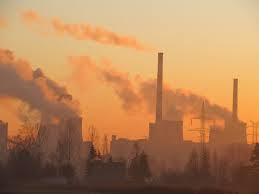Black-outs On the Horizon in Poland
Aging coal-fired power plants are, of course, problematic for the reliability of the Polish electricity supply. A single outage in one or two huge coal plants can cause major problems in the grid supply of electricity, as we saw this summer. However, the strategy of building large new coal-fired power blocks is also problematic for many of the same reasons. Poland is the only country in Europe pursuing this strategy and it makes no sense.
A new report from a Polish expert argues that shortages could become critical in three to four years. The aging power plants are closing (many this year due to the end of their exemption period under the EU rules for major combustion plants). Others will simply close because they are falling apart in the next few years.
The only sources of electricity that can fill this void and create a more reliable and diversified electricity supply (critical to continued economic growth and energy security) are renewable energy sources (which could theoretically be built in the same necessary time window). Interconnection improvements with Germany could also supply electricity to Poland in the peak periods and during a domestic crisis (these are under development now). This will ironically boil down to Poland buying wind energy from Germany in many cases.
Assuring that the Polish state-owned firms will lack the financial means to finance a major transition in energy, the Polish Government has demanded that each all adopt at least one bankrupt coal mine. This, along with the end of a slush fund of green certificates from co-firing (which will be ruled illegal by the European Commission after the election) assures that the cash flow of the state-owned electricity producers will be in a squeeze. This happens just when over 1000 billion PLN is necessary to modernize the system.
Unfortunately, the Polish politicians have resisted the public opinion for renewable energy and come up with a nightmarish system that will delay new projects for 18-24 months or more as well as having chased away most serious international investors. Without outside investment, it is difficult to see how the energy sector can re-organize and re-build.
The model for the future is a system combined central plants with distributed energy sources in mini-grids and even in prosumer installations. This would reduce the expensive problem of expanding and upgrading much of the grid and is actually cheaper to end-users than new centralized power plants. It can also be done faster than new transmission lines and new coal-fired plants.
The political power of the mining industry, the lure of thousands of high-paid patronage jobs in state-owned utilities, and the habit of raiding the revenues of these utilities for the general budget will all hit a crisis point very soon. This pending crisis will likely prove to be the only event capable of breaking the spell in Poland.
A new report from a Polish expert argues that shortages could become critical in three to four years. The aging power plants are closing (many this year due to the end of their exemption period under the EU rules for major combustion plants). Others will simply close because they are falling apart in the next few years.
The only sources of electricity that can fill this void and create a more reliable and diversified electricity supply (critical to continued economic growth and energy security) are renewable energy sources (which could theoretically be built in the same necessary time window). Interconnection improvements with Germany could also supply electricity to Poland in the peak periods and during a domestic crisis (these are under development now). This will ironically boil down to Poland buying wind energy from Germany in many cases.
Assuring that the Polish state-owned firms will lack the financial means to finance a major transition in energy, the Polish Government has demanded that each all adopt at least one bankrupt coal mine. This, along with the end of a slush fund of green certificates from co-firing (which will be ruled illegal by the European Commission after the election) assures that the cash flow of the state-owned electricity producers will be in a squeeze. This happens just when over 1000 billion PLN is necessary to modernize the system.
Unfortunately, the Polish politicians have resisted the public opinion for renewable energy and come up with a nightmarish system that will delay new projects for 18-24 months or more as well as having chased away most serious international investors. Without outside investment, it is difficult to see how the energy sector can re-organize and re-build.
The model for the future is a system combined central plants with distributed energy sources in mini-grids and even in prosumer installations. This would reduce the expensive problem of expanding and upgrading much of the grid and is actually cheaper to end-users than new centralized power plants. It can also be done faster than new transmission lines and new coal-fired plants.
The political power of the mining industry, the lure of thousands of high-paid patronage jobs in state-owned utilities, and the habit of raiding the revenues of these utilities for the general budget will all hit a crisis point very soon. This pending crisis will likely prove to be the only event capable of breaking the spell in Poland.



Comments